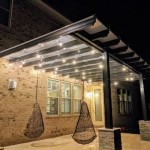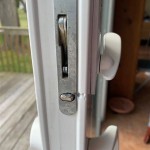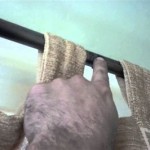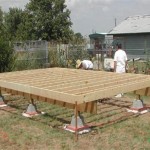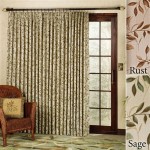Deterring Birds From Patio Areas: A Comprehensive Guide
Patio areas, designed as extensions of living spaces, often become unwelcome havens for birds. While birds can add a touch of nature to outdoor spaces, their presence can lead to issues like droppings, noise, damage to property, and potential health concerns. Successfully deterring birds from patios requires a multi-faceted approach, considering both humane methods and preventative measures. This article outlines various strategies to effectively manage bird activity and maintain a clean and enjoyable patio environment.
Understanding Bird Behavior and Attractants
Before implementing any deterrent methods, it's crucial to understand why birds are attracted to the patio in the first place. Several factors contribute to bird presence, including food sources, water availability, shelter opportunities, and nesting locations. Identifying the specific attractants is the first step toward effective bird control.
Food sources are a primary draw for birds. This includes spilled food crumbs from outdoor dining, pet food left unattended, fallen fruit from nearby trees, and even insects attracted to patio plants. Regularly cleaning up any food debris is essential to minimize attraction. Bird feeders, while intended to attract birds, can inadvertently draw them to unwanted areas, including the patio. If bird feeders are necessary, they should be placed far away from the patio and maintained to prevent spillage.
Water sources, even seemingly insignificant ones, can also attract birds. This includes standing water in planters, bird baths, and even puddles after rain. Regularly emptying and cleaning these water sources helps reduce their appeal. Bird baths, if desired, should be placed away from the patio and cleaned frequently to prevent the spread of diseases.
Shelter and nesting opportunities are also significant attractants. Dense vegetation, such as overgrown bushes and vines, provides birds with a safe place to roost and build nests. Regularly trimming vegetation and removing potential nesting materials can deter birds from settling on the patio. Consider the placement of patio furniture; certain configurations can inadvertently create sheltered areas that attract birds.
Implementing Visual Deterrents
Visual deterrents rely on the birds' natural instincts to avoid perceived danger. These methods often involve employing objects that mimic predators or create distracting movements and reflections. The effectiveness of visual deterrents can vary depending on the bird species and the environment, so it's often beneficial to combine multiple methods for optimal results.
One common visual deterrent is the use of reflective surfaces, such as shiny streamers, pinwheels, or reflective tape. The movement and reflections of these objects disrupt the birds and make them feel uneasy. Hanging CDs or DVDs can also achieve a similar effect. These objects should be strategically placed around the patio to maximize their visibility and impact.
Another effective visual deterrent involves predator decoys. Plastic owls, hawks, or snakes can be placed around the patio to simulate the presence of natural enemies. The placement of these decoys should be realistic and occasionally changed to prevent birds from becoming accustomed to them. It's crucial to choose decoys that resemble the natural predators of the birds in the area.
Motion-activated sprinklers are another option for deterring birds visually. When a bird approaches, the sprinkler will activate, startling the bird and encouraging it to leave. These sprinklers can be placed around the perimeter of the patio and adjusted to cover a wide area. The sudden burst of water is generally harmless to birds, but it effectively discourages them from lingering.
Utilizing Auditory Deterrents
Auditory deterrents rely on sounds to scare away or disorient birds. These methods can range from ultrasonic devices that emit high-frequency sounds to devices that play recorded bird distress calls or predator sounds. The effectiveness of auditory deterrents can also vary depending on the bird species and the surrounding environment.
Ultrasonic bird repellers emit high-frequency sounds that are inaudible to humans but can be irritating to birds. These devices are often battery-operated and can be placed around the patio to create a zone of discomfort for birds. The effectiveness of ultrasonic devices is debated, and some studies suggest that birds may become accustomed to the sounds over time. However, they can be a useful tool when combined with other deterrent methods.
Sonic bird repellers play recorded bird distress calls or predator sounds. These sounds are designed to frighten birds and encourage them to leave the area. The effectiveness of sonic repellers depends on the quality of the recordings and the species of birds being targeted. It's important to choose recordings that are specific to the bird species causing the problem. The volume of the sound should also be adjusted to avoid disturbing neighbors.
Wind chimes, while often appreciated for their aesthetic appeal, can also act as auditory deterrents. The random sounds produced by wind chimes can be disruptive to birds and discourage them from settling on the patio. The type of wind chime and its placement can affect its effectiveness. Choosing a wind chime that produces a variety of sounds and placing it in a windy area can maximize its deterrent effect.
Implementing Physical Barriers and Exclusion Techniques
Physical barriers and exclusion techniques involve creating physical obstacles to prevent birds from accessing the patio. These methods are often the most effective for long-term bird control, as they directly address the issue of access. The specific barriers and techniques will vary depending on the design of the patio and the areas where birds are most likely to congregate.
Bird netting is a common and effective physical barrier. It can be used to cover specific areas, such as outdoor furniture, plants, or architectural features, to prevent birds from landing or roosting. The netting should be properly installed and maintained to prevent it from sagging or tearing. It's important to choose a netting material that is durable and weather-resistant. The mesh size of the netting should be small enough to prevent birds from passing through.
Bird spikes are another type of physical barrier that can be installed on ledges, railings, and other surfaces where birds tend to perch. The spikes are designed to make it uncomfortable for birds to land, discouraging them from settling in those areas. Bird spikes are available in a variety of materials, including plastic and stainless steel. The choice of material will depend on the environment and the level of exposure to the elements.
Wire grids can be installed over open areas, such as courtyards or balconies, to prevent birds from entering. The grid should be made of a durable material, such as steel or aluminum, and the openings should be small enough to prevent birds from passing through. Wire grids can be customized to fit specific areas and can be a discreet and effective way to exclude birds.
Maintaining a Clean and Uninviting Environment
In addition to implementing specific deterrent methods, maintaining a clean and uninviting environment is crucial for long-term bird control. This involves regularly cleaning the patio, removing food sources, and eliminating potential nesting materials. A proactive approach to cleanliness and maintenance can significantly reduce the attractiveness of the patio to birds.
Regularly cleaning the patio is essential to remove food crumbs, bird droppings, and other debris that can attract birds. Sweeping, hosing down, or power washing the patio surface can help maintain a clean and sanitary environment. Pay particular attention to areas where food is consumed, such as outdoor dining tables and grills. Cleaning up spills immediately can prevent birds from being attracted to the area.
Removing potential nesting materials, such as twigs, leaves, and grass clippings, can deter birds from building nests on the patio. Regularly inspecting the patio for signs of nesting activity is important, especially during the breeding season. Removing any partially built nests can discourage birds from continuing to build in that location. Trim any overgrown vegetation that could provide shelter or nesting opportunities for birds.
Properly storing garbage and recycling containers is also important to prevent birds from accessing food waste. Use containers with tight-fitting lids and ensure that they are regularly emptied. Avoid leaving garbage bags exposed, as birds can easily tear them open in search of food. Consider using bird-resistant garbage cans to further deter birds from accessing waste.

5 Diy Ways To Keep Birds Away Natural Bird Repellent

Deterring Birds From Your Patio This Summer Skedaddle Humane Wildlife Control

5 Home Remedies To Keep Birds Away Bird Control

Keep Birds Away From Your Patio Deck Or Balcony With These Simple Tips Deckseal

Free Diy Bird Deter Device That Works

12 Tips On How To Keep Birds From Pooping My Deck Porch Patio And Pool

Diy Bird Deter From Patio Birds Were Leaving Droppings All Over My And Furniture So I Ma Deters Backyard Projects Outdoor Living Decor

How To Keep Birds Off Porch Everything You Need Know

Bird Repellent Outdoor Decoration Reflective Deter Device Hanging Protective Repel Garden Devices Patio For Com

How To Keep Birds Off Patio Furniture 12 Tips
Related Posts


